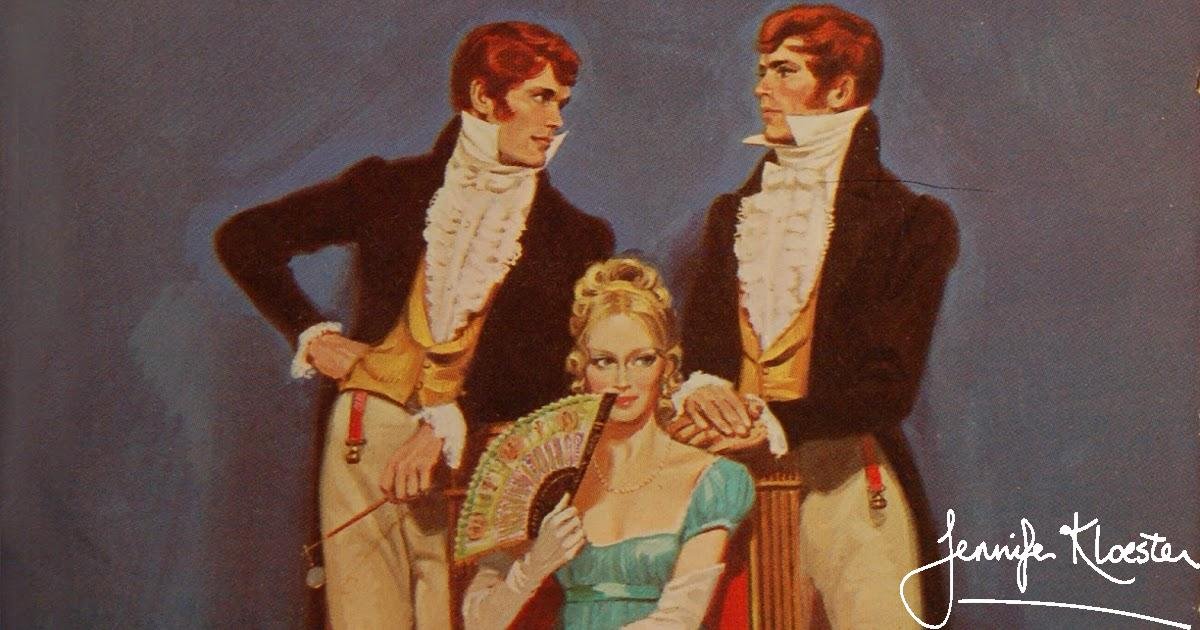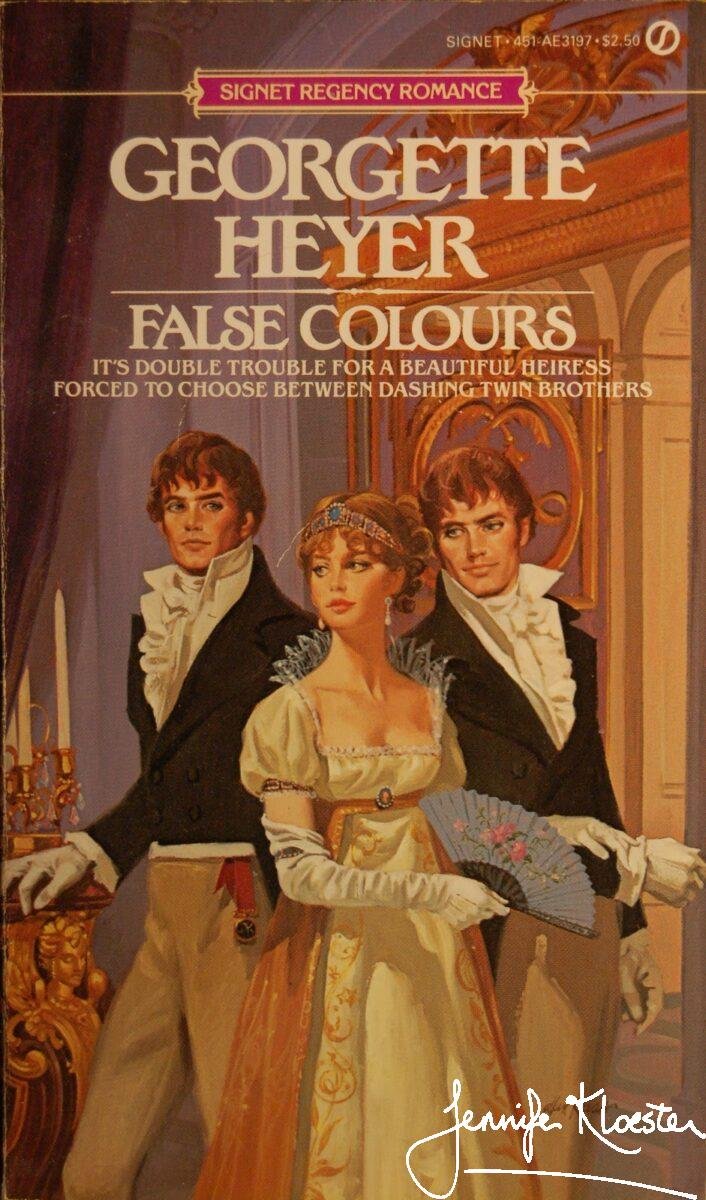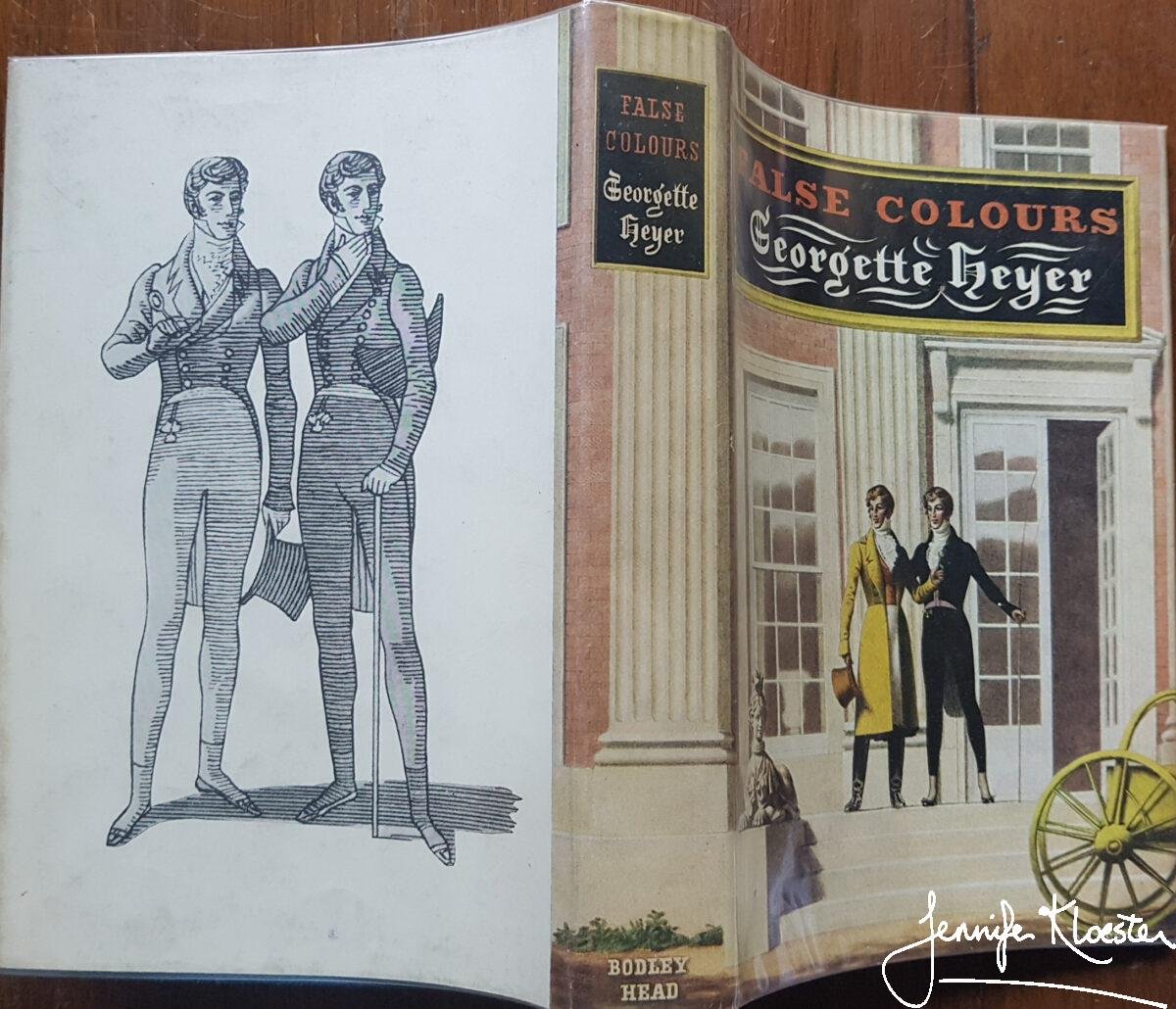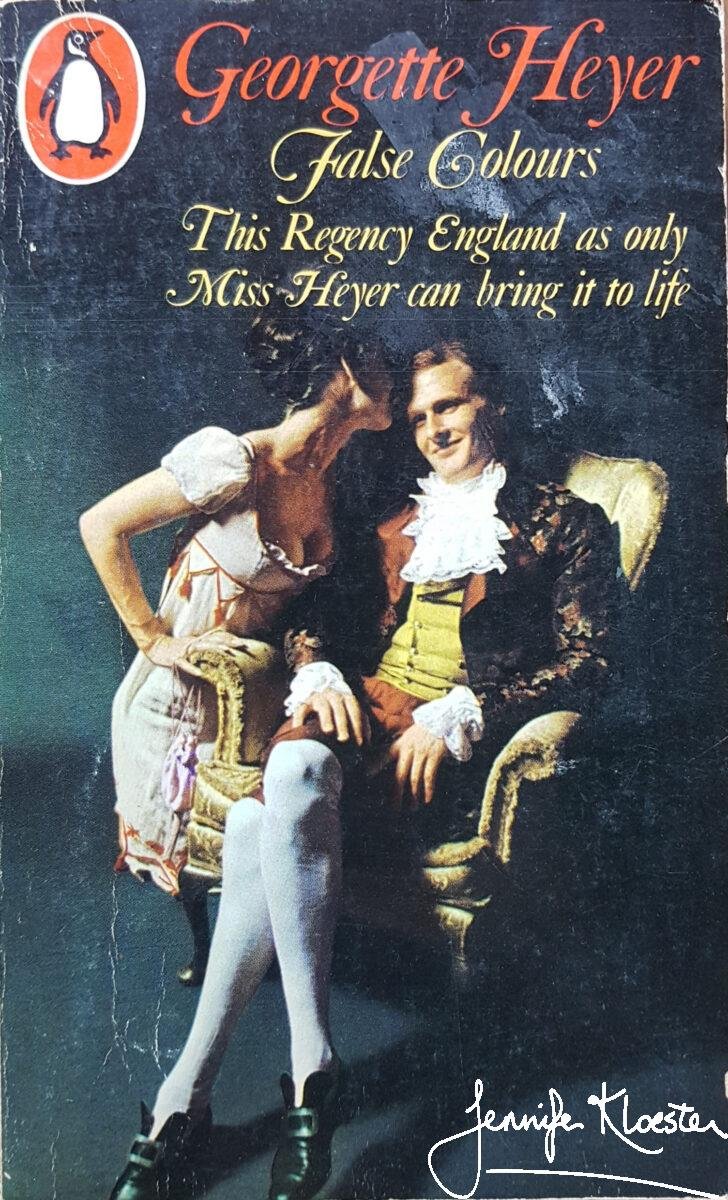
Direct from Georgette’s pen
It is rare to have a synopsis of a Georgette Heyer novel direct from Georgette’s pen, but among the letters she wrote to her friend and former publisher, A.S. Frere, the one for False Colours has survived. It is long (1650 words) and very detailed. It also includes many of Georgette’s characteristic side remarks and interpolations. As always, when writing to friends she wrote very much as she spoke and with her characteristic and, at times, self-deprecating humour. She wrote the synopsis in mid-April 1963 without having begun the novel. Just nine days later she had written the first 40,000 words of the manuscript. Georgette would turn 61 in August but the years had not diminished her ability to write compelling stories and write them incredibly fast. False Colours would eventually be over 104,000 words long and yet Georgette wrote it in just two months. Perhaps because she always had a clear idea of both the plot and her main characters before beginning a new book, the writing just flowed. Certainly, the synopsis – orginally written for her new publisher, Max Reinhardt, but first sent to Frere – accurately reflects the book that was to become False Colours. Here are the first three paragraphs of Georgette Heyer’s synopsis:
“The time is Jun-July 1817; the setting first in London, & thereafter in Sussex, at Ravenhurst (fictitious), ancestral home of Our Hero. The plot concerns identical twin brothers, & the imbroglio into which they plunge springs from the urgent need to rescue entrancing, but wholly irresponsible Mama from her financial difficulties. She is Amabel, Lady Denville, a widow of 15 months standing, modeled on Georgiana, Dss of Devonshire (whom I have stated firmly she is thought to resemble). Like Georgiana, she never dared disclose the full sum of her debts to rigid husband; & like Georgiana she borrowed money from all & sundry, feeling, every time she borrowed from Peter to pay Paul, that she was in funds at last.”
“The twins are 24 years old. The elder, Evelyn, Earl of Denville, was thought by Father to be about as volatile as Mama, for which reason he left his estate in Trust – sole trustee being his almost equally rigid brother, Henry, Lord Brumby – ex-Ambassador – either until Evelyn reached the age of 30, or until Uncle thought him fit to cope. In fact, while he enjoyed undisputed possession of a large income, he couldn’t touch his principal without his uncle’s consent. The younger twin, hero, is the Hon. Christopher (Kit) Fancot, who entered the Diplomatic Service 3 years before the story opens, & is one of Lord Stewart’s suite, in Vienna. The story opens with his unexpected arrival in London, on leave, in the middle of the night. He has had one of those twin-feelings that all is not well with Evelyn, & soon learns from Mama how right he was. He also learns that Evelyn went off, ostensibly to Ravenhurst, ten days before, having said he would return within a week. No one has the least idea where he is, but as he sent faithful groom back to London before leaving Ravenhurst for an unknown destination, it looks as if one of his wild moods has descended on him. Mama discloses that before he went away he had proposed to the Hon. Cressida (Cressy) Stavely, a 20 year old girl, who is intelligent, & – fortunately! – possessed of a strong sense of humour, reason for this sudden plunge into matrimony: Poor Mama’s debts MUST be discharged, & Uncle has said that if only Evelyn would sober up, & marry a Suitable Girl, he is more than willing to wind up a Trust of which he never really approved. I should add that Uncle has always regarded Poor Mama as a Menace, & would only sell out to pay her colossal debts under conditions wholly unacceptable to her. Cressy’s reason for consenting to this marriage de convenance is the sudden acquisition of a young stepmother, who wants to get rid of her, being wildly jealous. Cressy feels that she’d better clear out – for her own comfort, & also her father’s. So she accepted Evelyn’s offer, & so did father – subject to consent of dragon of Grandmama. Kit arrives in London on the eve of a family dinner-party at the Stavely mansion, at which Evelyn is to be presented to Grandmama – who is already prejudiced against him.
Of course, you’ll never guess what happens. I’ll put you out of eager suspense. Mama gets one of her brilliant ideas, & coaxes & bullies Kit into impersonating Evelyn “just for one evening!” But – again of course! – it turns out to be for much longer. And WHAT DO YOU THINK? In due course he falls in love with Cressy, & she with him. Take a stiff brandy, & read on!”
Georgette Heyer to A.S. Frere, letter, 15 April 1963

The twins – Kit & Evelyn
Georgette wrote only one novel featuring twins. Kit and Evelyn Fancot are identical in looks but completely different in temperament. Kit features in the novel far more than Evelyn, of whom we hear much but only meet in the last third of the book. Both young men are endearing, but it is Kit who takes centre stage, having to impersonate his brother in order to save the family from scandal and Kit who falls in love with the girl Evelyn is meant to marry. Even though he is not in the story as much as his brother, Georgette declared that “Evelyn is going to be fun”. She has him overturn his curricle and then rescued by a genteel family with a beautiful daughter (who is not only named Patience but is surprisngly like Patience Chartley in Georgette’s previous book, The Nonesuch) and the rest – as they say – is history. Here is Heyer’s account of Evelyn and Patience from her synopsis – complete with a pithy observation about the likely success of their union:
“He came round, as he raptly informs Kit, to find an Angel bending over him. This was Patience, the eldest unmarried daughter of the house, with whom he instantly fell in love. I have not the smallest intention of bringing this character on to the scene, being in full agreement with Poor Mama, who, after listening to Evelyn’s rapturous description of her, confided to Kit & Cressy that she sounds a very insipid sort of girl. Evelyn is always falling in love, & out of it, but this is the Real Thing. I shouldn’t think myself that the marriage would be a success, but his family believe Patience may be just the job, & who am I to know better than they do?”
As always, Georgette’s characters lived for her – perhaps because she thought of them as real people. Just one more reason why her characters live for her readers.

Highlights
Although False Colours does not often rate in readers’ Top Ten Favourite Heyer Novels, the book has many highlights that make it worth reading and re-reading. Among these are the marvellous Mrs Alperton – a former prostitute who arrives at Ravenhurst hoping to blackmail Evelyn (who is really Kit) for breach of promise after he has apparently neglected her daughter Clara. It is obvious that Georgette enjoyed writing these chapters and especially bringing the unflappable Cressy into the scene to save the day – much to Kit’s astonishment and gratification. Another highlight is the twins’ mother, Lady Denville, whose glorious naiveté and good intentions are the cause of the entire imbroglio. Married when she was just seventeen to a man of stern mien and severe habits, poor Amabel has no idea about money or debt. All she knows is that, like the Duchess of Devonshire upon whom she is based, she must keep her debts a secret from her husband. It is, however, the wonderfully named Sir Bonamy Ripple who almost steals the book. Georgette described him as “one of my more felicitous creations” and indeed he is among her best comic characters. Vividly brought to life by Heyer’s clever pen, Sir Bonamy is a gourmand and a true hedonist. He is also enormously fat, immensely wealthy and unstintingly generous. He has been Lady Denville’s cicisbeo (gallant admirer) for years and the scene at the end of the book where he meets her after bedtime and is not wearing his corsets is hilarious. Georgette was very pleased with Sir Bonamy. Her is her account of her “absurd dandy” whom Lady Denville so artfully and sweetly manipulates into offering her marriage and thereby solving most of the book’s problems:
Sir Bonamy Ripple, an immensely fat, wealthy, & absurd dandy, who was one of her [Lady Denville’s] original suitors, & has been her faithful cicisbeo ever since – regarded by her husband with indifference, & by her sons as a good joke. Do not even away with the idea that this pleasing character is produced like a conjuror’s rabbit! He is mentioned in the first chapter, & makes an appearance soon after.
I feel this decision of Mama’s should produce a very good scene, for I rather think she jockeyed Sir Bonamy into the marriage. I don’t think he really wanted to marry her, or anyone else. It had suited him very well to be on cicisbeo-terms, & to fancy himself a bachelor-for-her-sake. He had been lending her money, without interest, for years; besides getting the heirlooms copied for her.
Evelyn, who can see no fault in Mama, is against the marriage, but Kit – who has reached the stage of wondering why no one ever spoke of Poor Papa – feels it is the only solution, since Mama has no money-sense whatsoever, & will infallibly run up fresh bills all her life. So he & Cressy set out to convince Sir Bonamy that the Devotion of a Lifetime is at last winning its reward, & that he is going to be wonderfully happy. Fortunately he is as persuadable as he is good-natured, so All End’s Well, & the whole gang lived happily ever after.
Georgette Heyer to A.S. Frere, letter, 15 April 1963.

A jacket from Barbosa
With False Colours well under way, in May Georgette had a visit from her Arthur Barbosa. By 1963 Barbosa had been designing her book covers for almost ten years ahving begun with The Toll-Gate in 1954. Georgette loved his elegant designs which she felt represented her work far better than the jackets produced by Pan for her paperbacks. For years she had found the Pan book covers inappropriate and on one occasion almost salacious. Only a month earlier she had written to Elizabeth Anderson, the Rights and Contracts manager at Heinemann (who licensed the Pan paperbacks), to acknowledge Pan’s long overdue response to her concerns:
I am glad to note that PAN propose to improve the quality of the cover-pictures. Will you please request them to avoid, in future, the somewhat salacious touch which characterized at least one of these? It has never been my practice to try to interfere with the production side of my work, but I have been meaning for some time to protest against any suggestion that a book written by me will be found to contain lurid sex-scenes. I find this nauseating; I have ample evidence that my fans are revolted by it; and I have enough sense to realize that new readers, attracted by a sex-suggestive cover, will suffer nothing but disappointment if they are misled into buying the book.
Georgette Heyer to Elizabeth Anderson, letter, 23 April 1963
It is worth noting that for most of Heyer’s career, even if she had wanted to include sex scenes in her novels, censorship laws would have prevented her from doing so. It wasn’t until 1959 that the Obscene Publications Act was passed amending the laws governing cases such as author Walter Baxter’s who, with Frere, in the mid-1950s had been distressed to have to face court over Baxter’s book, The Image and the Search. It wasn’t until 1960, that the new laws would be tested with the legal suit against D.H. Lawrence’s book Lady Chatterley’s Lover, which would result in a victory for authors, publishers and reader. The right to include sex scenes in novels would not tempt Georgette Heyer, however, to change the habit of a lifetime. She preferred to write witty, elegant comedies of manners and Barbosa’s beautiful wrappers suited her perfectly. As she happily told Max Reinhardt:
“I have just had Barbosa here, with a design for the jacket, & I write to tell you that I like it very much, & think it stands out as an unmistakable Heyer-novel. He tells me that Heinemann always urged him to depict a Beautiful Female, which he refused to do, knowing that he would surely earn himself a blast from me. I know nothing about the commercial properties of wrapper designs, but I do think this one should stand out, lending itself nicely to Displays. I do know that Harrods Book Dept. are enthusiastic about Barbosa’s jackets for my books, so I hope you’ll agree that this one fills the bill.”
Georgette Heyer to Max Reinhardt, letter, 13 May 1963
Arthur Barbosa – illustrator

Artur Ernesto Teixeira de Vasconcelos Barbosa (1908-1995) was born in Liverpool to a half-French mother and a Portugese father. His father was a vice-consul with a distinguished lineage but, despite his Continental ancestry, his son Arthur (he preferred the English version of his name) would go on to become a quintessential Englishman. Arthur disliked the modern tendency towards familiarity and thus would always be known to friends and acquaintances as “Barbosa”. He was educated at St Edward’s School, Oxford, before going on to the Liverpool School of Art, the Heatherley School of Fine Art and finally, the Central School of Art. A talented artist and illustrator, Barbosa began to successfully exhibit his work while still a student. He also had a penchant for interior design and, at the age of only twenty, designed the interior of St Andrew’s Church in West Kirby, Wirral, Merseyside. In the 1960s Barbosa would design the interiors for Elizabeth Taylor and Richard Burton’s yacht Kalizma and actor Rex Harrison’s house in Portofino, Italy. Barbosa would become best-known for his iconic illustrations for Georgette Heyer’s book jackets and for his covers for George MacDonald Fraser’s Flashman novels.

A copy for Max Reinhardt
Dear Max
There is a certain difficulty attached to the autographing of books which one didn’t bestow on the applicant. Angela Thirkell used to overcome it by writing: “I wish that I had given this book to X–;” but if I were to copy her (which God forbid!) it would be a gross lie. You can’t think how glad I am that you had to pay handsomely for it! I shall merely say that I am happy to know that wish to place a copy of it amongst your personal books – however much I may deplore your taste in literature!
Yours ever,
Georgette
Georgette Heyer, personal dedication to her publisher, Max Reinhardt, on the fly-leaf of False Colours.




